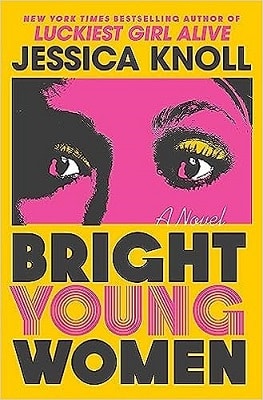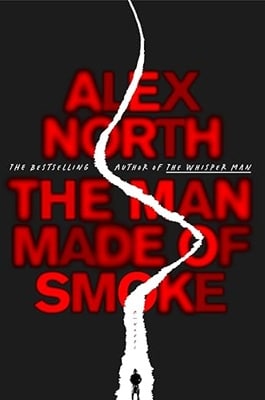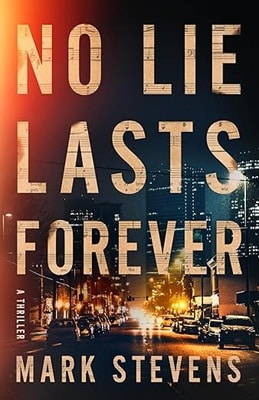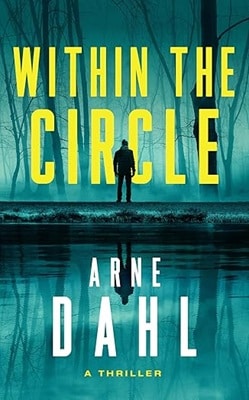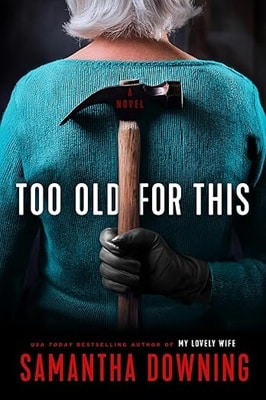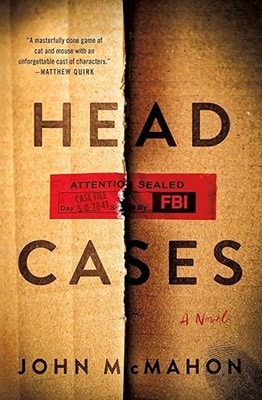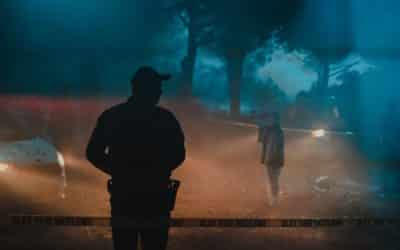Book Review
Bright Young Women
reviewed by Barbara Saffer
Horrific serial killer Ted Bundy, who murdered at least 30 women in seven states between 1974 and 1978, has been described as intelligent, sharp, cunning, clever, wily, and charming. According to author Jessica Knoll, this portrayal is, at least in part, a ‘cover-up’ by inept law enforcement officials.
After Bundy’s arrest for multiple murders, these officials allowed him to escape repeatedly. While on the run, Bundy continued his killing spree. Instead of accepting the blame, authorities depicted Bundy as a manipulative genius, a notion Knoll believes is patently false.
The novel, inspired by Bundy, portrays an unnamed character Knoll refers to as ‘the defendant’ as both arrogant and academically challenged. In the narrative, the defendant enrolls in a third-rate law school because, “despite hundreds of hours of preparation, his Law School Aptitude Test results were mediocre, and his performance on the grammar part of the exam was below high school level.” The defendant doesn’t even manage to graduate from this mediocre institution.
Rather than glorify the serial killer, as many newspapers, books, documentaries, movies, television shows, and podcasts often do, Knoll delves into the lives of several women affected by his heinous acts.
As the story begins, on a Saturday night in January 1978, Pamela Schumacher, president of the most prestigious sorority at Florida State University in Tallahassee, is coordinating the group’s annual blood drive. Concurrently, Pamela’s sorority sisters, including her close friend Denise Andora, depart from the sorority house to enjoy an evening with their fraternity peers.
Later, at 3:00 AM, a hungry Pamela wakes up and heads downstairs to prepare a peanut butter sandwich. She hears a noise and spots a man, armed with what appears to be a child’s baseball bat, rushing down the stairs and exiting the front door. Fortuitously, the stairwell’s shadow conceals Pamela from the intruder’s view.
That evening, the defendant murders two of Pamela’s sorority sisters, Denise Andora and Robbie Shepherd, severely injures two others, Jill Hoffman and Eileen Neilson, and assaults another woman nearby.
In the aftermath of this horrifying event, Pamela encounters a woman named Tina Cannon from Seattle, Washington. Tina is convinced the defendant murdered her friend, Ruth Wachowsky, four years earlier. In July 1974, Ruth, along with another woman, vanished from Seattle’s Lake Sammamish State Park, and Ruth’s remains were never discovered.
Pamela and Tina join forces with journalist Carl Wallace to investigate the defendant’s criminal past. They unearth that he enrolled in a Utah law school in 1974, coinciding with a series of disappearances in the Salt Lake City area. An escapee victim’s testimony led to his arrest and subsequent extradition to Colorado for a trial related to another woman’s murder. It was in Colorado where the authorities glaringly faltered. The defendant managed to escape twice: once from a law library and then from a jail cell. His escape enabled him to commit more heinous crimes.
On their visit to Colorado to gather information on the defendant’s escapes, Pamela, Tina, and Carl face uncooperative police and prison officials. These officials, in a bid to defend their incompetence, claim the defendant was “a force beyond anyone’s control.” This angers both Pamela and Tina, who insist that the negligent actions of the law enforcement facilitated the murders at Florida State University.
With the defendant’s arrest for his crimes in Florida, Pamela braces herself to stand as a witness against him. Testifying proves to be challenging, particularly as the audacious defendant represents himself.
Throughout the trial preparations, readers are taken on a journey back in time, revealing more about Pamela, Tina, and Ruth, all of whom became the defendant’s direct or indirect victims.
Set mostly in the late 20th century, a period when women’s and LGBTQ+ rights were not as recognized as they are today, the protagonists face challenges ranging from homophobia, sexism, misogyny, and male chauvinism. Additionally, personal obstacles such as family issues, neglectful parents, selfish partners, and tragic losses impact their lives. Thus, in addition to demystifying the serial killer’s persona, Jessica Knoll sheds light on issues pertinent to the women’s personal lives.
Knoll’s perspective serves as an effective method to desensitize the allure surrounding the serial killer and shift the focus towards the women scarred by his unspeakable acts. However, understanding the psychology behind serial killers, many of whom possess troubled pasts, remains crucial in our collective endeavor to prevent future atrocities.
Thanks to Netgalley, Jessica Knoll, and S&S/ Marysue Rucci Books for providing a copy of the book.
More Serial Killers
advertisement
Serial Killer Features
For the Love of Serial Killers
Where does our obsession with serial killers come from?
Two Psychopaths in Fiction
A Comparison of Hannibal Lecter and Anton Chigurh
Serial Killers
The three classifications of serial killer

